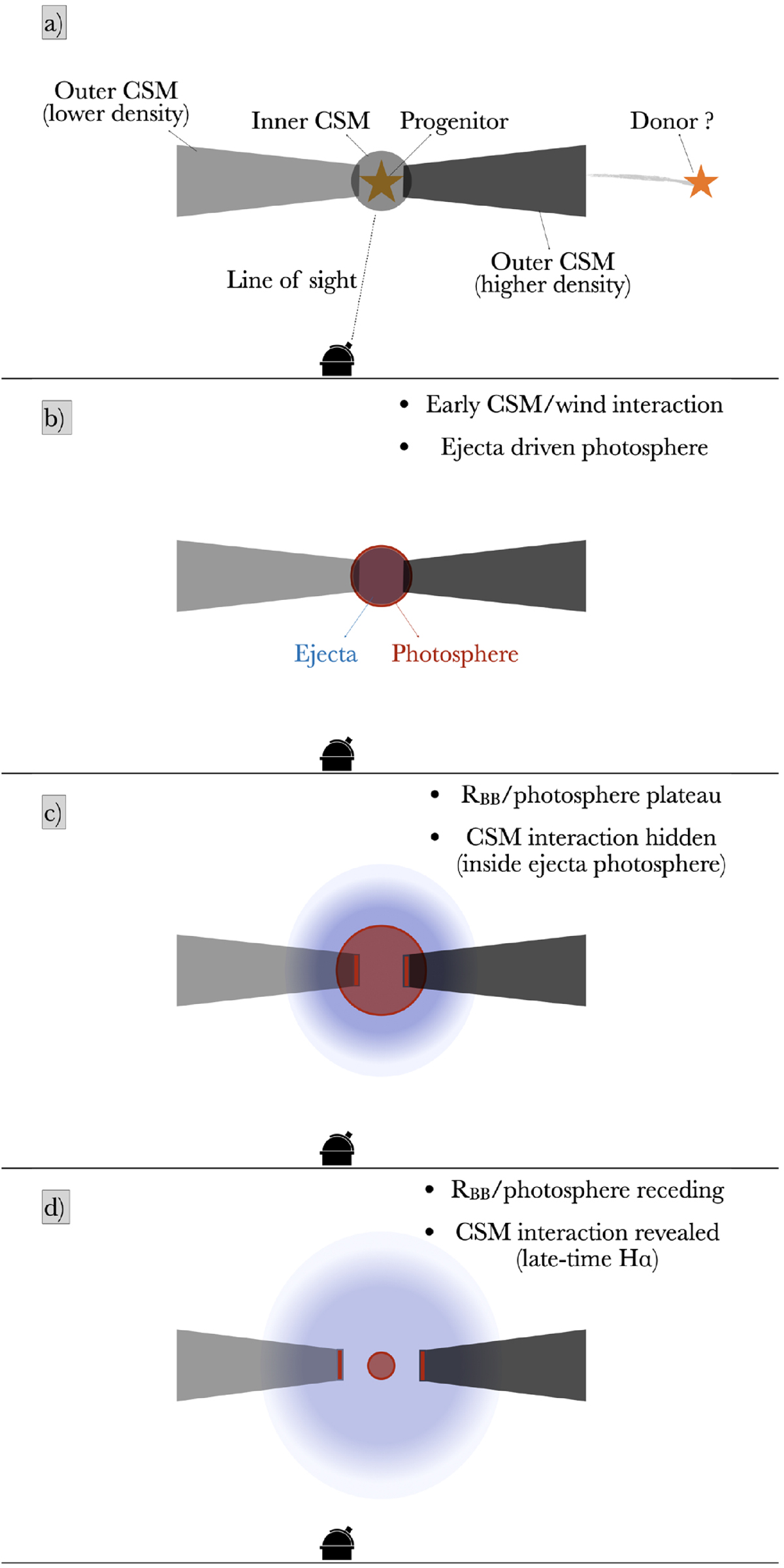Fig. 22.

Download original image
Example of a possible configuration that gave rise to SN 2022lxg. We envisage a disc-like CSM (with a potentially azimuthally asymmetric density distribution) with the line-of-sight at a low inclination. (a) Before the explosion, we suggest that the CSM closest to the progenitor is denser and could have been formed by material transferred from a donor combined with stellar winds. (b) The fast-moving ejecta crash into the inner dense CSM giving rise to the observed flash-ionisation features and the luminous peak. Within ∼10−15 d this denser CSM is completely swept-up by the ejecta. (c) Between 10−35 d, the ejecta encounter the outer, hydrogen-rich, disc-like CSM and encompass it. Broad lines from the free-expanding, cooling ejecta emerge while the radius of the composite photoshpere plateaus. (d) After ∼35 d, the photosphere recedes, the optical depth of the ejecta drops, and the power comes from the interaction. Narrower Hα emerges and dominates the spectrum.
Current usage metrics show cumulative count of Article Views (full-text article views including HTML views, PDF and ePub downloads, according to the available data) and Abstracts Views on Vision4Press platform.
Data correspond to usage on the plateform after 2015. The current usage metrics is available 48-96 hours after online publication and is updated daily on week days.
Initial download of the metrics may take a while.


